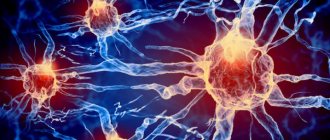After your first period, your body establishes a cycle of ovulation and menstruation, which lasts about 28 days. But how does this all happen?
The menstrual cycle is a natural part of every woman's life. In order to understand how it happens and how long periods last, you need to study female anatomy.
Hymen
A soft, elastic layer of skin with an opening that surrounds the entrance to the vagina from the outside. Many girls' hymens break down long before they lose their virginity.
Vagina
Elastic muscular tube. At first, the vagina is narrow, but it expands in depth.
The vagina connects the uterus to the external genitalia. The entrance to the vagina is located between the urethra and the anus.
Cervix
Entrance to the uterus and vagina
Uterus.
It has compacted muscle walls and a small cavity, the walls of which are covered with mucous membrane.
Fallopian tubes
Through them, the fertilized egg enters the uterus with the help of tiny villi.
Ovaries
Eggs mature inside them.
Endometrium
The fertilized egg is located in this glandular tissue. If the egg is not fertilized, the glandular tissue leaves the body during menstruation.
Pelvic floor muscles
Keep the genitals in their place.
Clitoris
Located in the front of the urethra, between the labia minora, it is a cluster of nerve endings that cause sexual arousal.
Labia
The opening to the vagina is surrounded by the outer (major) and inner (minor) labia.
The structure of the female genital organs
A woman's external genitalia include the labia majora, labia minora and the clitoris. The labia minora border the opening of the urethra (urethra) and the vestibule of the vagina. The point of their connection is the clitoris, covered with a thin mucous membrane, the so-called mucosa. The clitoris, due to its sensitivity, plays a significant role in sexual arousal. Inside, the vagina is connected to the cervix, which is its lower part. Then the uterus expands, and it is into it that the egg enters, and the embryo and fetus develop during pregnancy.
Ovulation
When your body produces enough sex hormones, one egg matures in one of your ovaries approximately every 4 weeks. A mature egg leaves the ovary and moves to the fallopian tubes. This process is called "ovulation". During this period, you may experience more abundant and clear discharge.
Fallopian tubes
Over the next 4 days, the egg moves through the fallopian tubes to the uterus
Location of the egg
At the same time, the endometrium (the lining of the uterus) thickens to create the most comfortable place for the subsequent placement of the egg, strengthened by blood vessels and supplied with nutrients.
Menstruation
If the egg is not fertilized, it leaves the body along with menstrual flow. The place prepared for the development of a fertilized egg also becomes unnecessary. Approximately 2 weeks after ovulation, the upper layers of the endometrium are shed and excreted from the body in the form of menstruation. With the onset of menstrual flow, a new egg begins to mature and a new cycle begins.
The first is the follicular phase
The initial phase of the menstrual cycle is characterized by intensive growth of follicles and the formation of eggs in them. The first day of menstruation marks the start of a new follicular phase of the cycle and intensive production of follicle-stimulating hormone and estrogen begins. During this period, follicles are growing, which a little later will become a container and a place for maturation of the egg.
Estrogen provides support to the follicles and this continues for about 7 days, until one of the follicular vesicles reaches the necessary parameters for the maturation of the egg in it. Further growth is focused only on the egg, and the “extra” follicles stop functioning. A high concentration of estrogen gives a signal for the start of the production of luteinizing hormone, which, in turn, prepares for future ovulation. The duration of the first phase is individual for each woman, but it should not exceed 20 days.
Menstrual cycle and its phases
The duration of the menstrual cycle is about 28 days. However, it is recognized that a normal cycle can last from 21 to 35 days. All processes occurring in a woman’s body are conventionally divided into several phases.
Menstrual phase. This is the time of bleeding from the uterine cavity. During this period, lasting from 3 to 6 days, the body rejects the layer of mucous membrane - the endometrium, to which a fertilized egg should have attached in the event of pregnancy.
Follicular phase. It begins simultaneously with menstruation and lasts an average of 14 days. During this phase, a new follicle is formed in the ovaries - a special component in which a new egg matures. In addition, the process of renewal of the endometrium in the uterus begins.
Ovulatory phase. It lasts about 3 days, during which time, under the influence of hormones, the mature follicle ruptures and a mature egg, ready for fertilization, emerges from it. This process is called ovulation. During ovulation, some women may experience pain in the lower abdomen, on the side where the egg was released.
Luteal phase. It lasts 11–16 days. At this time, the hormones estrogen and progesterone are actively produced, which prepare the entire body for pregnancy. In the luteal phase, a phenomenon called premenstrual syndrome (PMS) often occurs. This is a set of symptoms associated with natural changes in hormonal levels: normally, before menstruation, a woman may experience pain in the lower abdomen, increased appetite, mood changes, swelling of the mammary glands, etc.
What is the normal cycle length?
The normal length of a cycle is 21–35 days, but it’s okay if sometimes it lasts a few days more or less. This is due to fluctuations in hormones under the influence of environmental factors: stress, flights and time zone changes, unusual physical activity for an untrained person, colds or flu, etc.
A one-time delay of up to 7 days is not a reason for concern. But if the cycle suddenly lengthens and begins to regularly continue for more than 35 days, then this condition is called oligomenorrhea and requires a thorough examination. If there is no menstruation for 6 months or more, this is amenorrhea. This condition is a sign of serious disorders in the functioning of the body. There are more than 25 causes for amenorrhea and oligomenorrhea, but the first thing you need to do before going to the doctor if the delay is more than 7 days is a pregnancy test.
If the cycle has always been long or normal (28–35 days), and now has steadily shortened to 21–23 days, first of all you need to be examined for signs of menopause, including premature ovarian failure.
There are 2 reasons for physiological irregular menstrual cycle:
- The first year after menarche (first menstruation) in teenage girls
- Menopausal transition phase in women
Days of menstruation
Let's take a closer look at what changes in the female body occur during menstruation.
Day 1. At the beginning of the menstrual cycle, it begins with the rejection of the “old” endometrium - a special layer of the uterine mucosa - and the bleeding itself. This process, necessary for the female body, often becomes one of the most uncomfortable periods of everyday life. Unpleasant sensations during menstruation are normal and are caused by contractions of the uterus.
Day 2. On the second day of the monthly cycle, pain and heaviness in the abdomen may persist. Meanwhile, the body begins to form a new egg. During menstruation, the functioning of the sebaceous glands may change due to hormonal changes, so it is important to pay special attention to personal hygiene.
Day 3. After the “old” endometrium is rejected, a wound surface forms on the walls of the uterus. At this stage of the menstrual cycle, the risk of infection is especially high, so gynecologists recommend abstaining from sexual activity while your period lasts.
Day 4. By the 4th day of the menstrual cycle, the woman’s well-being improves, but during menstruation it is still worth limiting physical activity and trying not to overwork. Following these recommendations reduces the amount of blood loss during menstruation.
Day 5. As a rule, menstruation lasts 5 days, but there may be individual differences. During this time, the healing process in the uterus is completed. Metabolism accelerates in the renewed body, and the woman feels much better and more energetic compared to the beginning of the menstrual period.
Duration of menstruation
The question of how long menstruation should normally last interests many. But there is no clear answer to it. On average, the norm for bleeding is 3-7 days. Deviations may indicate disorders in the reproductive system. They can also be caused by taking certain medications. Often the duration of menstruation changes in women who are overweight and have problems with the immune system.
Hormonal imbalances, in particular those associated with thyroid pathologies, can lead to prolonged bleeding. Other reasons include:
- Blood clotting disorders.
- Hyperplasia of the uterus and cervix;
- Development of neoplasms of the genital tract.
- Inflammation of the reproductive organs.
Congenital features, endometriosis, decreased function of the ovaries and pituitary gland can provoke a reduction in menstrual flow. This occurs when there are defects in the wall of the uterus, which can occur after surgery, difficult childbirth or abortion.
Bleeding intensity
The bleeding that we call "discharge" or "period" is not always the same in intensity. Various life circumstances - the birth of a child, diet, stress, different methods of contraception - can affect how long your period lasts and the intensity of discharge during this period. It is different for different women, and also sometimes differs for the same woman in different menstrual cycles - all this is not a deviation from the norm. Therefore, tampons are available in many formats and with varying degrees of absorbency. By choosing the right product, you will be protected and able to feel comfortable every day of the month - so that nothing gets in the way of enjoying life without compromise, even during menstruation. Use our tampon selector to find out which tampon is right for you. Talk to your doctor or gynecologist if you have questions about your period or problems with your menstrual cycle.
Rules of behavior and hygiene during menstruation
Relaxation can help relieve pain during menstruation. Activities that promote blood circulation will help reduce cramping. Take a walk, ride a bike, put a heating pad on your stomach, or take a warm bath.
Before your period, it is important to do things that bring you pleasure: communicate with friends, buy yourself your favorite treat, sleep more, in a word, do things that will help neutralize the effects of the negative symptoms of PMS (premenstrual syndrome).
Water will help cope with bloating and reduce fluid retention in the body before menstruation. It's hard to believe, but consuming it can actually reduce PMS symptoms. Eat vegetables and fruits with a high water content, drink warm herbal tea and juices. Add foods high in magnesium and vitamin E (dried apricots, bananas, avocados, etc.) to your diet. It is recommended to reduce the consumption of black and green tea, coffee, salt and sugar.
During menstruation, you must follow the rules of personal hygiene: use pads or tampons to absorb discharge, shower daily, wash your face 2-3 times a day. Experts recommend stopping sexual activity during menstruation.
What to do?
As you can see, there can be many reasons for cycle disruption. Examination and treatment are determined in each case individually. You will greatly help your gynecologist make a diagnosis faster if you fill out the menstrual calendar in advance.
Primary examination:
- First a pregnancy test, and then: If bleeding: Ultrasound of the pelvic organs
- In case of delay/amenorrhea: ultrasound of the pelvic organs and blood test for hormones on days 2–3 of the cycle: FSH, TSH, prolactin.
Menstrual function is a mirror of a woman’s health. The reproductive system is the first to respond to stress, and the latter is restored when balance is restored. There are many reasons for a woman’s menstrual dysfunction, and at the first sign you should immediately go to your gynecologist for an appointment.










